December 2, 2023 @ 9:00 AM – 1:00 PM
Related Events
November 11, 2023 @ 9:00 AM – 12:00 PM
Related Events
November 11, 2023 @ 10:00 AM – 1:00 PM
Related Events
November 12, 2023 @ 10:00 AM – 12:30 PM
Related Events
Looking for a fun day out this fall? Make sure you include CT Grown on your itinerary! With tasty products and unforgettable experiences all throughout the harvest season, Connecticut farms help give autumn its unique character. Whether you’re looking for an interesting weekend activity or need a fun family excursion, you can find it at a local farm.
Don’t miss these CT Grown experiences while celebrating the “fall-idays” this year.
Pick your own apples
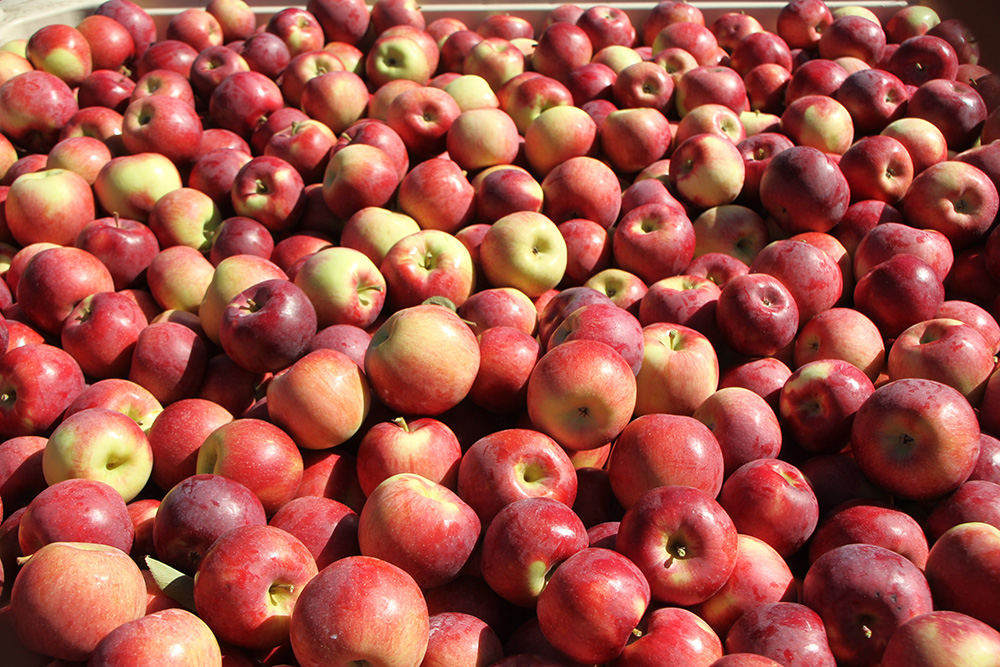
For many Connecticut families, visiting an apple orchard and picking your own apples is a beloved tradition. Take home a bag for snacking, or grab a few bushels to use in your baking and keep in storage during the winter. Please be sure to check ahead for availability, and follow the farm’s rules for the best experience.
Get some apple cider

We look forward to apple cider all year! This tangy beverage is delicious whether it’s warmed up with cinnamon and spices, served cold, or served extra cold as a cider slushie. And once cider season is back, apple cider donuts make their return as well! These treats are the perfect balance of apple, cinnamon, and sugar, and are a must-have to complement the crisp fall days.
Visit a pumpkin patch

Whether you need to find just the right pumpkin for a Halloween jack o’lantern or a selection of smaller specimens for your fall decorations, a visit to the pumpkin patch is in order. This is a particularly fun activity for children, who love to scramble among the pumpkins and find one that catches their eye.
Get lost in a corn maze

The distinctive corn mazes at Connecticut farms are projects that take months of planning and preparation. Once fall arrives, you can see the results of all this hard work and challenge yourself to navigate these intricate labyrinths. In addition to daytime visits, farms often schedule special evening events inviting people to try the maze by flashlight.
Enjoy a hayride

A hayride is a uniquely fall-flavored way to tour the farm fields. Hay bales are stacked in a wagon to provide surprisingly comfortable seating as a tractor pulls you along. Some farms pair hayrides with special fall events, such as spooky “haunted hayrides” for Halloween.
Have some seasonal ice cream
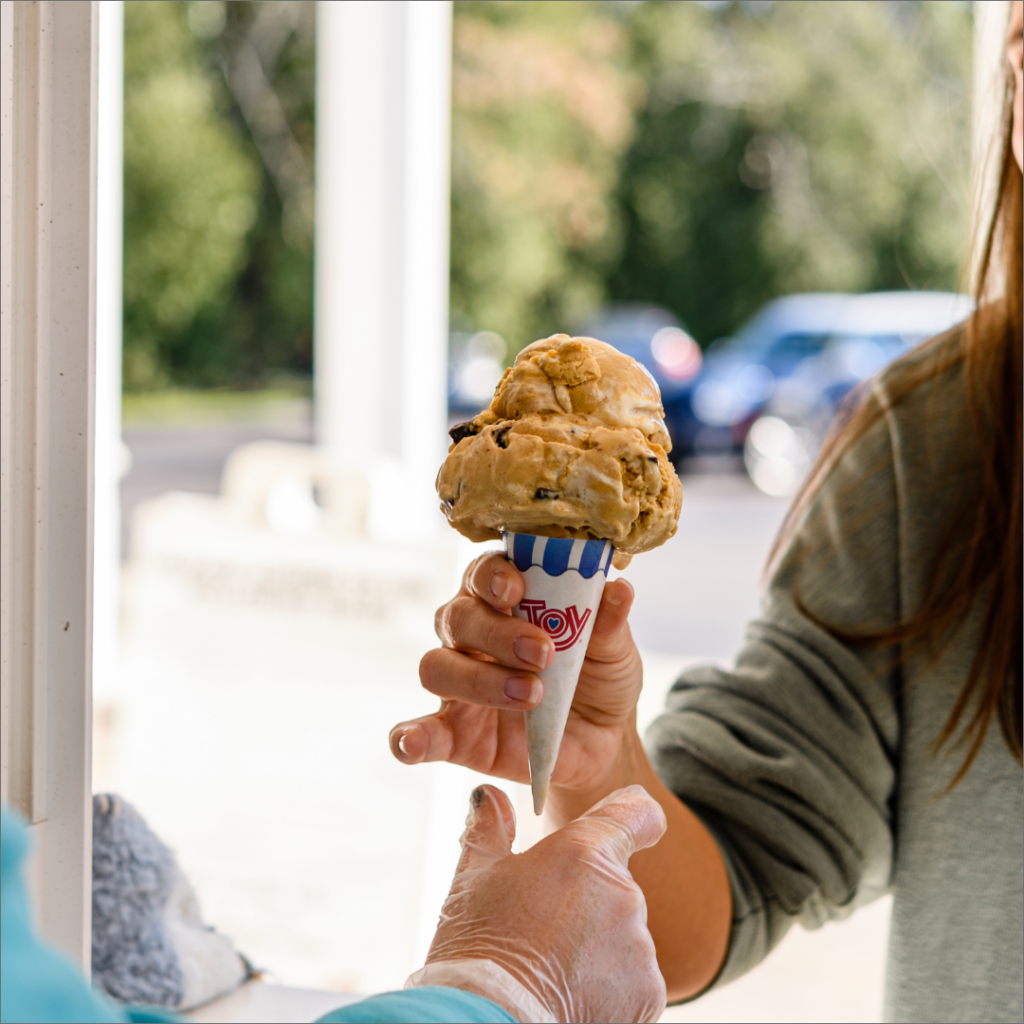
Too chilly for ice cream? Never! Though temperatures are dropping, farm ice cream stands remain open with fall flavors like pumpkin, gingerbread, or apple pie. Many of these stands close for the winter, so don’t miss this last chance for a special treat!
Find a fall fair or festival

Join the festivities! Fall is a popular time of year for festivals in Connecticut, with events celebrating the state’s bounty of apples, pumpkins, garlic, flowers, and more. Agricultural fair season winds down in October, but there are still a few last celebrations you can check out during the fall.
Stop by the farmers’ market

Most CT Grown products are in season in October, and the local farmers’ market is a great way to put CT Grown on your plate! You can find a market in just about every community in Connecticut, giving you a chance to peruse goods from local farms, connect with farmers, and enjoy live music and other activities. Outdoor farmers’ markets typically close their season at the end of October, but many communities continue their markets indoors during the winter.
Celebrate Aquaculture Month

Connecticut’s seafaring traditions have been part of the state’s culture for generations, with the proximity of Long Island Sound and the Atlantic Ocean giving the state convenient access to a wide range of aquaculture goods. There are 60,000 acres of shellfish beds harvested commercially along the Connecticut shoreline, and you can also find products like clams, mussels, lobsters, squid, and finfish hauled in by local fishermen. Kelp has also been growing in popularity, with a growing number of coastal farms harvesting this product.
Get ready for Thanksgiving
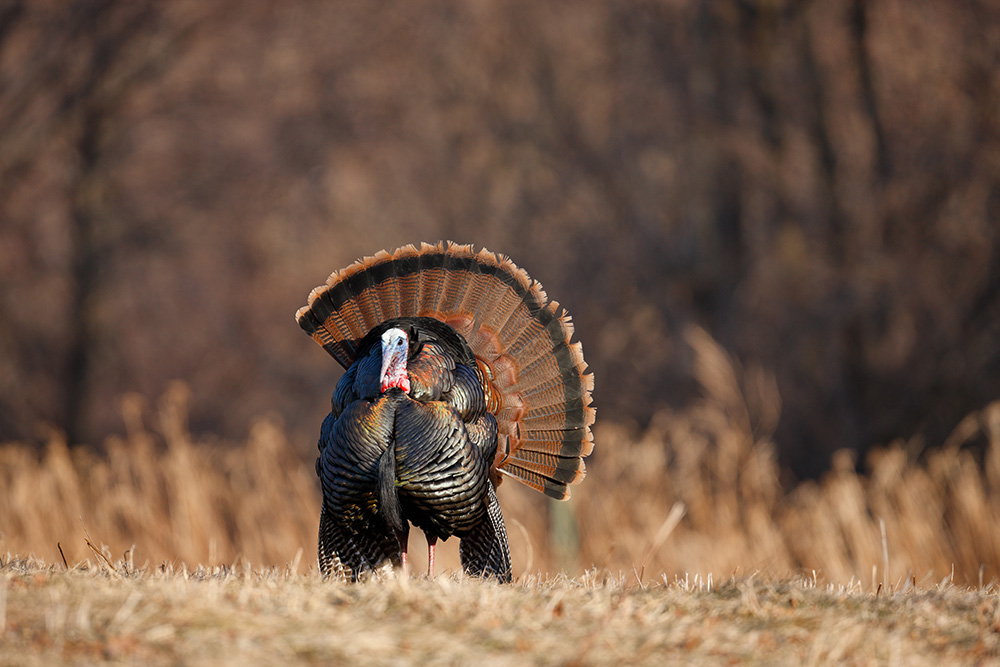
Start your preparations for the big Thanksgiving feast early! CT Grown farms are taking orders for turkeys, and reserving your bird ahead of time helps guarantee that you’ll have one available in November. You can also check with your local farm to get potatoes, green beans, homemade pies, wines, and other supplies for the holiday.
Getting some CT Grown products into your daily diet is easier than you might think. Here are 10 ways you can include CT Grown on your plate each day.
1. Look local for your morning eggs
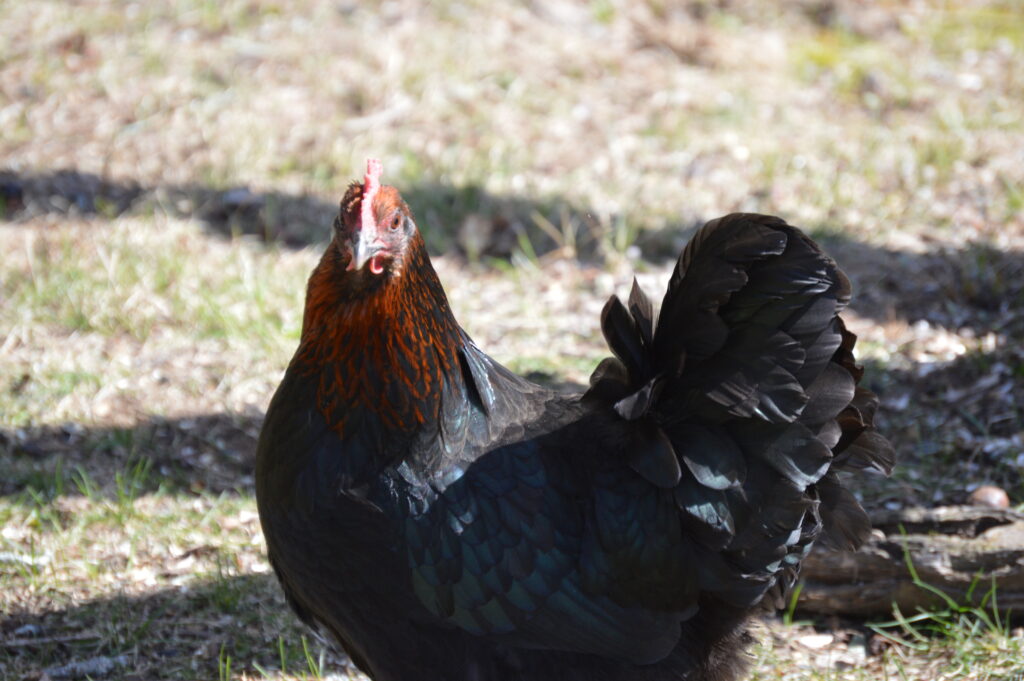
If you like to cook up an omelet to get you going in the morning, take a look around your neighborhood to see where you might be able to pick up some fresh eggs. Many farms keep small flocks of chickens, and offer eggs at their farm store. Connecticut also has several large egg producers, selling products under brands like Eggland’s Best, The Farmers Cow, and Hillandale Farms.
2. Sign up for a dairy delivery
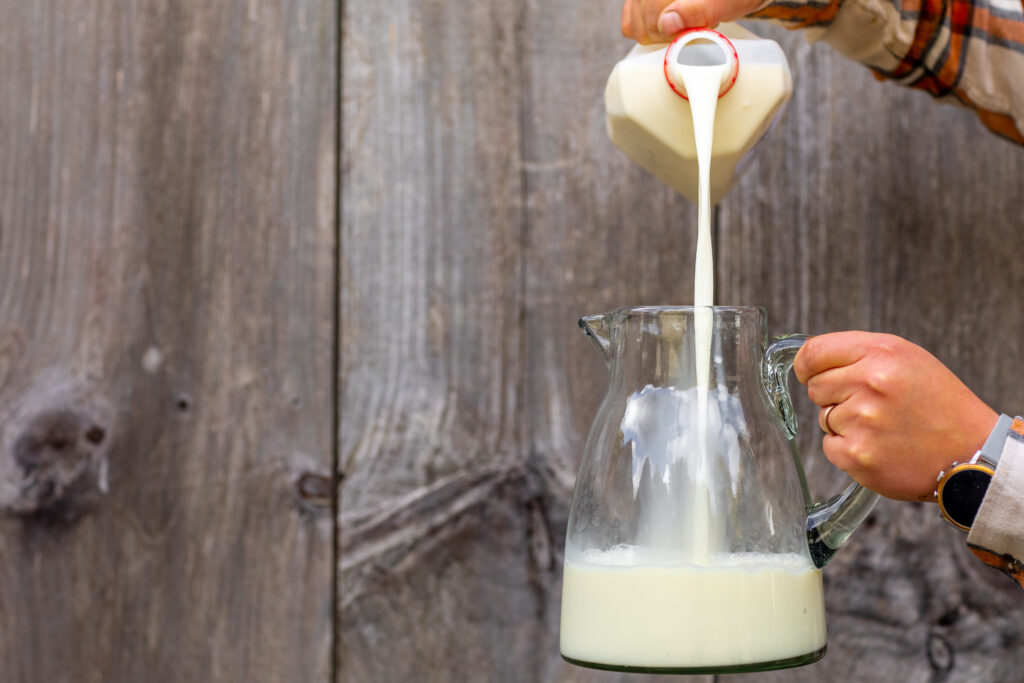
Several Connecticut dairy farms are working to bring the milkman back to our neighborhoods. You can find options for delivery services that bring fresh supplies of milk, yogurt, and cheese right to your doorstep. Some farms pair this offering with other CT Grown products, making it even easier to get your groceries and support your local farmers.
3. Pack a CT Grown apple for lunch
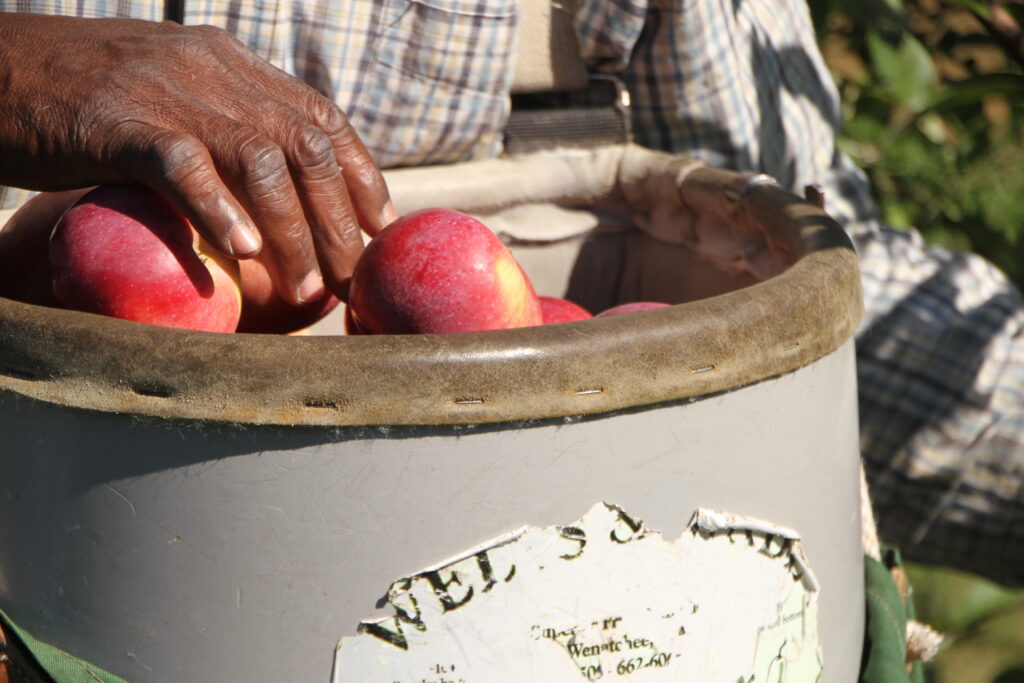
More than 2,000 acres in Connecticut are dedicated to growing apples, and bountiful harvests of this fruit are readily available from July to October. Visit an orchard to pick your own apples, then pack an apple with your lunch each day. Since apples store well, you can continue to find fresh apples from orchards throughout the winter and into the early spring.
4. Look for locally sourced items at your favorite restaurant

Several restaurants in Connecticut commit to partnerships with local farms to acquire seasonal items and staples such as dairy, meats, and shellfish. When local food is on the menu, you can enjoy fresh, seasonal items and discover delicious new varieties and cuts.
Be sure to check out CT Farm-to-Chef Week from September 9-16, 2023. This annual occasion showcases venues that use CT Grown food for their dishes and beverages, giving you a chance to discover new eateries with a farm-to-table commitment.
5. Find CT Grown when grocery shopping
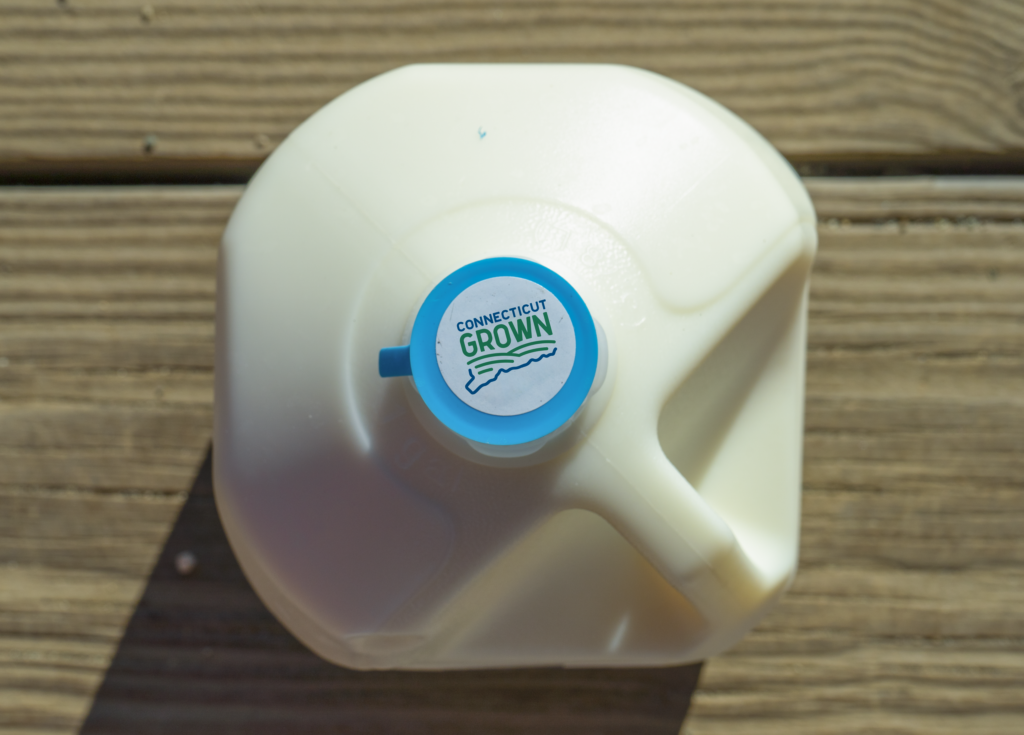
Connecticut farms often partner with wholesalers and retailers to make their products available at local grocery stores and food co-ops. Look for the CT Grown logo to find food items that are produced locally. Some stores also feature special displays to showcase value-added products from Connecticut producers, such as honey, sauces, maple syrup, and salsas.
6. Make a local farm your meat market
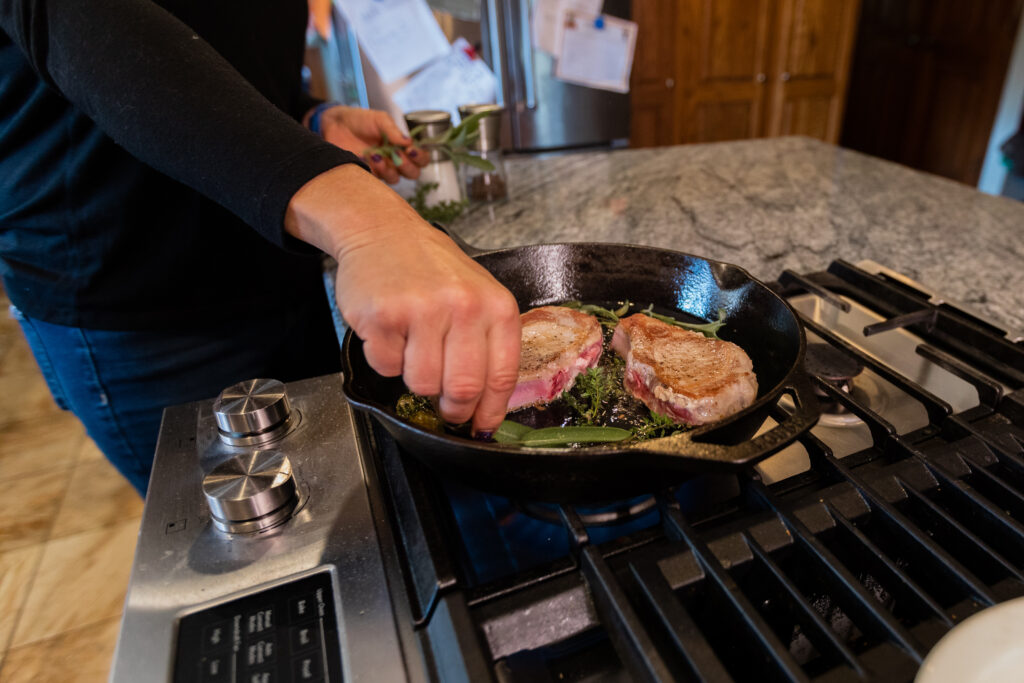
Connecticut farms raise a wide variety of meats, including beef, pork, chicken, turkey, and even specialty items like bison and emu. A visit to one of these farms not only lets you discover new cuts, but also gives you the option to purchase large shares of meat to freeze for future meals.
7. Stock up on local wines

Connecticut is home to 45 licensed farm wineries featuring scenic vineyards and beautiful tasting rooms. In addition to picking up local options when shopping for wine, you can also sign up for a membership, wine club, or Adopt-A-Vine program that lets you regularly pick up new vintages or enjoy discounts when you visit a winery.
8. Use pick-your-own for your baking needs

Pick-your-own farms give you a chance to get out in the fields and orchards to select fresh seasonal items like apples, berries, peaches, pears, and pumpkins. Farms invite visitors to purchase these products in bulk, and you can put these larger quantities to good use with mouthwatering baking options like pies, breads, and muffins that use locally sourced ingredients.
9. Become a regular at the farmers’ market

By visiting a farmers’ market each week for some of your grocery shopping, you can discover new varieties of produce, custom cuts of meat, homemade sauces and jams, and much more. You can also talk directly with local farmers to get advice on how to best prepare and store your food.
10. Start researching CSAs now
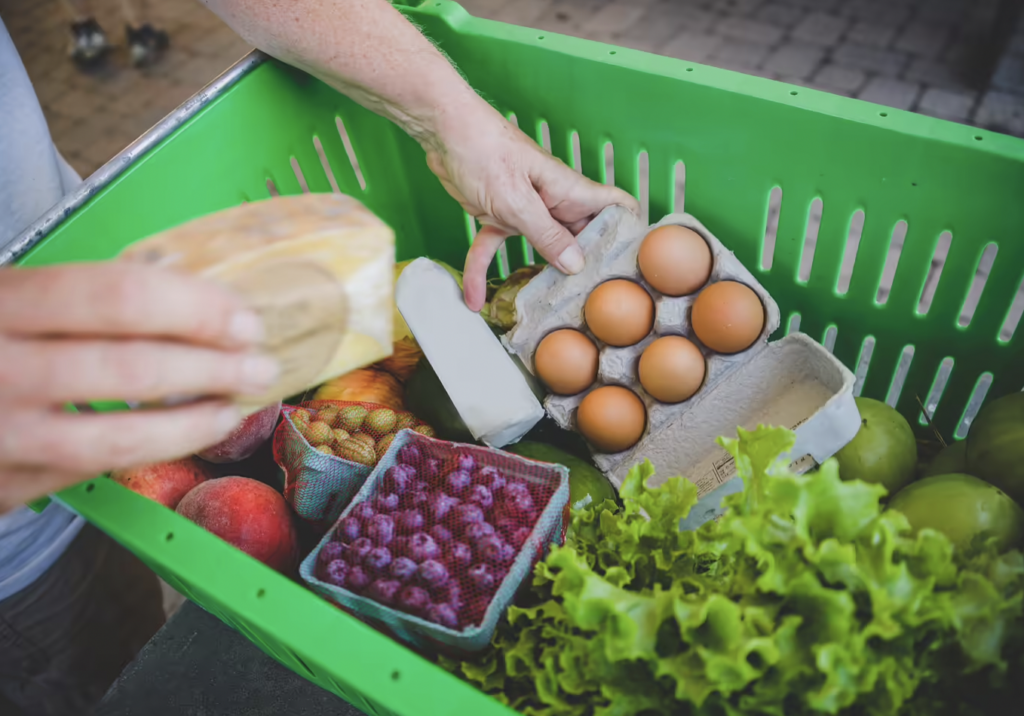
Many farms participate in Community Supported Agriculture (CSA) programs, where you purchase a portion of a farm’s harvest in advance and regularly pick up shares of fresh produce during the growing season; CSAs are also available for products like flowers, meat, and cheese. Farmers begin welcoming sign-ups for CSA programs at the beginning of the year, but you can start looking into options near you to find one that fits your needs.
June 15, 2023 @ 3:00 PM – 6:00 PM
Related Events
June 3, 2023 @ 9:00 AM – 12:30 PM
Related Events

New Englanders are a hardy people, often stubbornly so. When cold weather arrives, we see no reason to give up the activities we’ve enjoyed in the summer and autumn. We may put on an extra layer or two, but we’ll still visit the beach, fire up the grill, or even head out on a bike ride.
So it shouldn’t come as a surprise that we like to keep our farmers’ markets running in the winter as well, even if we do move them inside. While these occasions may look a little different from the collection of tents and vendors that pop up in parks and other green spaces during the summer, they support the same mission of providing a community gathering place to find fresh food and meet your CT Grown farmers.
“Our farmers are using innovative techniques to extend the growing season and offer fresh produce and other CT Grown products well into the winter,” said Erin Windham, Agriculture Marketing & Inspection Representative 2 at the Connecticut Department of Agriculture. “Winter farmers’ markets not only offer an extended market for producers, but are also a great place to connect with people during the drearier months of the year and find unique holiday gifts for your loved ones.”
Is there really fresh CT Grown produce available during the winter?
Yes! The selection of fruits and vegetables will differ from what you find in the summer, but Connecticut farmers are still harvesting even after the frosts begin to arrive.
Traditionally, farmers have used greenhouses to extend growing seasons. These structures maintain warm temperatures and allow for the control of other growing conditions, such as irrigation. Greenhouses permit the year-round cultivation of summer crops like tomatoes and cucumbers, so you can still find fresh fruits and veggies — even when it’s snowing.
High tunnels, a greenhouse alternative, are also increasing in popularity in Connecticut. Consisting of a frame and plastic sheeting, these structures cover crops grown in the ground or in raised beds, protecting them from the cold or severe weather. High tunnels are simpler and less expensive than greenhouses, and allow farmers to keep harvesting crops into the winter.
Hydroponic and aquaponic systems have also allowed farmers to grow fresh produce year-round in Connecticut. Hydroponic systems allow plants to grow in a water-based, nutrient-rich medium rather than soil; they also permit farmers to adjust the necessary balance of water, nutrients, and oxygen, allowing crops to be grown quickly and efficiently. An aquaponic system combines hydroponics with aquaculture, allowing farmers to raise aquatic animals like fish whose nitrogen-rich waste provides nutrients to plants.
Some late season fruits and vegetables do well in cold storage, making them more readily available at winter markets. These crops include apples, beets, onions, potatoes, and turnips.
Certain vegetables have strong root systems, which mean they can remain in the ground over the winter and be harvested during this season. Cabbage, carrots, parsnips, and rutabaga are some of the crops that are still available late into the season due to this overwintering method.
Mushrooms are grown indoors, so they aren’t dependent on weather conditions and can be found fresh year-round. Some crops’ extended growing seasons also permit year-round availability, including herbs, lettuce, kale, and radishes.

Besides produce, what else can I buy at a winter farmers’ market?
Winter is the time for CT Grown products with year-round availability to shine at farmers’ markets. Our dairy farms stay busy over the winter, producing milk, cheese, cream, yogurt, and ice cream. Animal products like meats, eggs, fish, and shellfish are also available.
While we don’t often think of meats as having seasons like fruits and vegetables, you may notice expanded availability as producers work to ensure that specialities such as beef, pork, and lamb roasts, along with turkey, goose, and duck breast are ready for your holiday meals. This is also a great time of year to stock up on meat products for hearty soups, stews, and chili to feed a crowd and keep you warm.
Farmers who prepare for winter markets in advance will set aside some of their harvest for pickling or preserving, creating products like relishes, salsa, jams, and jellies. Other value-added products brought to market in the winter include honey, cider, maple products, beer, wine, and spirits.
You’ll see an increased focus on prepared foods at winter farmers’ markets with vendors selling baked goods and ready-to-eat soups and meals. You can also find handmade artisan items like soaps, candles, wood products, and clothing made from locally raised sheep and alpaca.
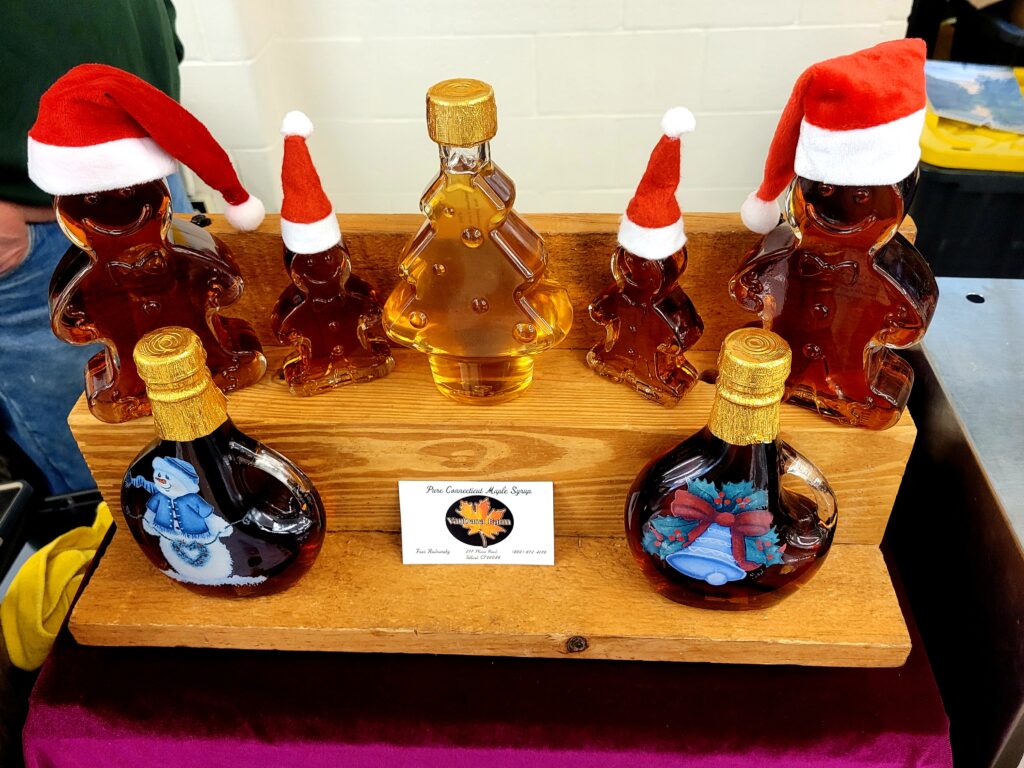
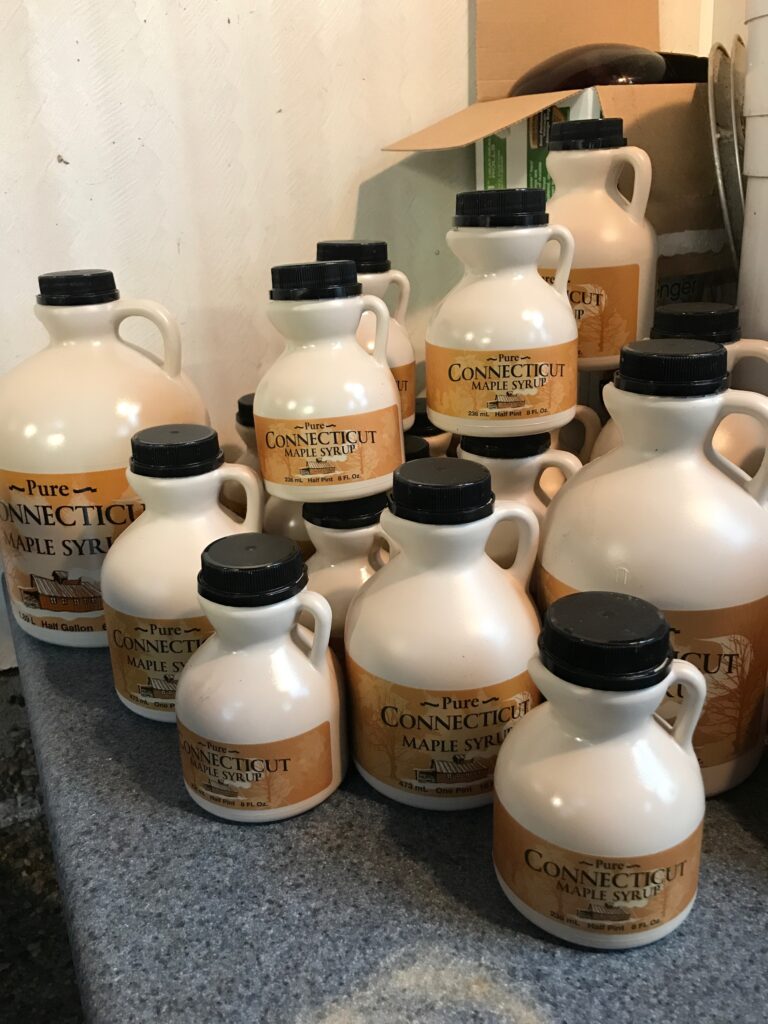
How do winter farmers’ markets support Connecticut farmers?
Farm revenue is often cyclical, with many farmers collecting the bulk of their income during harvest season. By selling products at winter markets, farmers can maintain cash flow during slower periods.
Winter markets help prevent food waste and lost income due to bruised or unsold fruits and vegetables. Instead of throwing this produce out, farmers can use it for preserves, sauces, and other value-added products to be sold later in the year.
Some farmers use the winter to take a breather from the busy season, which naturally means that winter markets are smaller than summer markets. Farmers who want to stay busy during the season can use winter markets to maintain a connection with their customers, enjoying face-to-face interactions throughout the year.
Can I use food benefits at a winter farmers’ market?
Benefits under the Farmers’ Market Nutrition Program (FMNP) expire on Nov. 30, but many winter markets accept Supplemental Nutrition Assistance Program (SNAP) benefits.
Under recently announced changes, SNAP benefits will go farther to help enrollees purchase local food options. The update to the program increased the number of eligible enrollees and boosted current enrollees’ benefits by 12 percent. Monthly benefits vary based on household size and income, but the change increased single recipients’ benefits by $31 a month and maximum benefits by $104 a month.
Enrollees can visit winter markets during the chillier months to maintain access to fresh produce and other CT Grown products. Some markets will also double benefits for certain products, usually fruit and vegetables.
Where can I find a winter farmers’ market in Connecticut?
Winter markets are sometimes held as one-day occasions to support holiday bazaars or other events, but usually take place weekly or biweekly. Just like their summer counterparts, they can be accompanied by live music, cooking demonstrations, educational workshops, and other entertainment.
July 30, 2022 @ 9:00 AM – 12:30 PM
Accepts SFNMP
